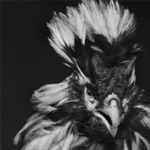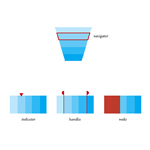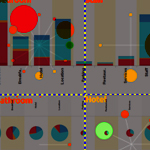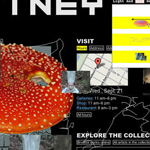Volume V, Issue 4
As we conclude our fifth full edition of the Parsons Journal for Information Mapping we again extend our deepest thanks to over one hundred writers, designers, scientists, theorists, researchers, and artists who have contributed to the Journal. We've greatly benefited from your contributions to the ever-growing dialog respecting the procedures and perceptions of what makes information design information design. Next, we thank our readers and subscribers and those who have shared articles and ideas found within our issues. For this issue we present the concluding article on the "concept of signal" where the discussion continues on the idea of signal as it relates to perception and cognition. Analysis, particularly along heuristic lines, serves a critical role in improving interface tools; we are therefore pleased to publish a specific case study: the information delivery models of online hotel review sites and findings on how to both improve the visual and cognitive aspects of these models. PJIM has always had an interest in disseminating the "how" of design process, for this issue we look at theories of various modalities of interaction in interactive information graphics. Last, we present a paper that takes a unique view at the uses of visual representation in creating and archiving socially and politically relevant art. Also, we are excited to bring on a brave new member to the PJIM team: introducing Ashawnta Jackson who serves as our first-tier editor and will responsible for our outreach and mailing list logistics. We are already looking forward to the release of the first issue in our sixth volume coming up in 2014 which will deal with big data and visualization, as well as experimental threads that are now running through this exciting field of informative communications—we at PJIM are very happy to have Ashawnta aboard!
Jihoon Kang, Publisher, and William Bevington, Editor-in-Chief
Parsons Journal for Information Mapping

Signal: An Expanded Semiotics of Periodicity (Part II)
by Michael Filimowicz

Modalities of Interaction with Information Graphics Through the Web
by Giovanni Profeta, MSC

Detecting End-User’s Visual Model to Build a Visualization Tool Based on Online Reviews
by Elizabeth S. Carvalho, Marcirio S. Chaves

Cartography and Mapping Visualizations—A Genealogy of Space: Digitization and Visual Representation of Knowledge as Art
by Laura Gracia

